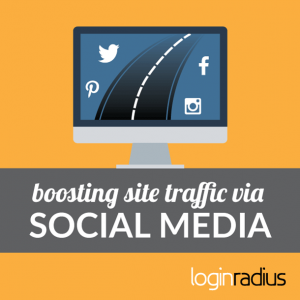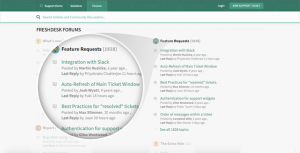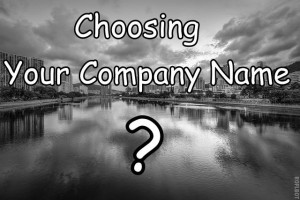The new target types, Company Category and Company Growth Rate, use data from Forbes and Fortune as well as LinkedIn’s own observable, behavioral data.
It’s no secret that LinkedIn’s ad targeting is by far the best out there for B2B, and it just got a bit sweeter. Last week, LinkedIn released two new forms of company targeting, and they’re not phoning it in – both are excellent and will be useful to our accounts.
The new ad targeting types are Company Category and Company Growth Rate.
Company Category
Company Category in LinkedIn Ads is a curated list from Forbes, Fortune, and LinkedIn. Forbes and Fortune publish their lists publicly, and this is easy for someone at LinkedIn to simply compile the list into a Matched Audience list and make available for every advertiser to use. Obviously, the LinkedIn versions are really easy to compile as well since they’re internally generated.
This list is somewhat limited now, but LinkedIn could continue to beef it up in the future. For instance, it would be great to have the Inc. 5000, and the S&P 500 lists, etc.
If you hover over the question mark on the targeting type for a clue on how the targeting works, LinkedIn says:
“Reach members based on the category their company falls into. Company categories are defined based on publications and industry lists that group companies into specific market segments.”
The options you’ll find under this targeting facet are:
- Forbes World’s Most Innovative Companies
- Fortune 100 Fast Growing Companies (Worldwide)
- Fortune 500 (US)
- Fortune Global 500 (Worldwide)
- Linkedin News Editors’ Top Companies (Australia)
- Linkedin News Editors’ Top Companies (Brazil)
- Linkedin News Editors’ Top Companies (Canada)
- Linkedin News Editors’ Top Companies (China)
- Linkedin News Editors’ Top Companies (France)
- Linkedin News Editors’ Top Companies (Germany)
- Linkedin News Editors’ Top Companies (India)
- Linkedin News Editors’ Top Companies (Japan)
- Linkedin News Editors’ Top Companies (Mexico)
- Linkedin News Editors’ Top Companies (United Kingdom)
- Linkedin News Editors’ Top Companies (United States)
- Linkedin News Editors’ Top Startups (Australia)
- Linkedin News Editors’ Top Startups (Brazil)
- Linkedin News Editors’ Top Startups (Canada)
- Linkedin News Editors’ Top Startups (China)
- Linkedin News Editors’ Top Startups (France)
- Linkedin News Editors’ Top Startups (Germany)
- Linkedin News Editors’ Top Startups (India)
- Linkedin News Editors’ Top Startups (Japan)
- Linkedin News Editors’ Top Startups (Mexico)
- Linkedin News Editors’ Top Startups (Netherlands)
- Linkedin News Editors’ Top Startups (United Kingdom)
- Linkedin News Editors’ Top Startups (United States)
We’ve had access to the Fortune 500 list for years by going through LinkedIn reps to enable it as a Beta Custom Segment, but public access to the list, along with all the other new lists are fantastic additions for marketers.
Company Growth Rate
The next LinkedIn targeting type I’m especially excited about because of how it’s derived is the Company Growth Rate.
The options for this targeting facet are:
- Negative growth companies
- 0% – 3% company growth
- 3% – 10% company growth
- 10% – 20% company growth
- 20%+ company growth
Hover over the question mark on the targeting type, and LinkedIn’s information bubble says:
“Reach members based on the year over year employee growth rate associated with their company. Growth rate for a company is determined by comparing recent total employee count vs one year prior.”
This doesn’t exactly spell out why this is so special, but let’s break down why it actually is.
Company Size is a type of targeting that we’ve had access to on LinkedIn since 2008, and it’s extremely useful. However, it is declared by the LinkedIn Page admin when the page is created. It’s rarely updated, or checked for accuracy. Many companies haven’t even set up a company Page, so their employees are simply left out when this targeting type is used.
The current Company Size buckets in LinkedIn are by the following number of employees:
- Myself only
- 1-10
- 11-50
- 51-200
- 201-500
- 501-1k
- 1k-5k
- 5k-10k
- 10k+
The new Company Growth Rate targeting is likely not derived from this data, because if you do the math, a jump in the current size buckets on LinkedIn would equate to a minimum 60-90% size increase since they’re so big. Plus, you’re subject to all the inaccuracies of them being inconsistently updated.
This new targeting is likely derived from the number of actual employee profiles who have listed the company as their employer. This would be a difficult number to accurately base your total company size from. That’s because of factors like blue-collar companies that don’t have nearly as many employees using LinkedIn as white-collar companies, so there would be a huge disparity between actual company size, and the company size visible to LinkedIn.
But for calculating a rate of growth, it works great! Both blue-collar and white-collar industries are nearly as accurate. Let’s say, a blue-collar company only has 33% of their workforce on LinkedIn and a comparably-sized white-color company has 95% of their workforce with profiles. When LinkedIn sees that each company now has 3% more employees this year, it’s still representative in both cases.
I love that this data is observable, behavioral data from LinkedIn, instead of LinkedIn waiting around for the company’s Page admin to remember to come and update it. This is also data that only LinkedIn has, and I’m a huge proponent of LinkedIn leveraging its proprietary data more (which they’re starting to do, as evidenced by the recent release of Member Traits targeting, which gave us the ability to target Frequent Contributors, Frequent Travelers, Job Seekers, those Open to Education, and by Device Preference.)
This is authoritative data that only LinkedIn has, and further cements its reign as the king of B2B targeting.
How can you use it?
I’ve thought that the new targeting could be useful in situations like:
- Targeting the Fortune 500 with enterprise-only offers
- Targeting high-growth companies’ HR leadership and C-suite with commercial real estate offers since they’re more likely to run out of space and look for larger office space
- Target high-growth companies with offers that are up-market or disruptive, because the movers and shakers are more likely to have the budget and appreciation for disruption
- Exclude negative growth-rate companies when your product/service is likely to exceed traditional budgets
All in all, I’m excited for this new targeting update since both facets are useful and I don’t see any flaws in how they’re derived.
Great job LinkedIn! Thanks for continuing to innovate so us marketers can generate higher-quality leads.
Opinions expressed in this article are those of the guest author and not necessarily Marketing Land. Staff authors are listed here.
Marketing Land – Internet Marketing News, Strategies & Tips
(50)
Report Post







